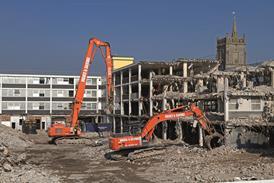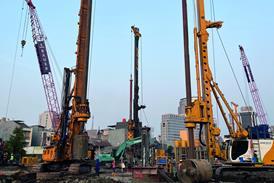The benefits of fault detection and diagnosis in hvac plant are easy to identify although they may be difficult to quantify in practice. Fault detection should nevertheless lead to higher plant availability, plant working efficiently at reduced cost and building occupants working more effectively.
Better diagnosis also has benefits such as a reduction in plant repair time, with perhaps reduced skill requirements and less time and effort spent on unnecessary work.
In September 1995, the BRE began work on a collaborative research project to develop those techniques into practical tools, and test them in practice.
The aims of the DETR-funded project were:
- to develop and test fault detection and diagnosis software tools;
- to develop software tools suitable for performing monitoring and automatic commissioning (by the University of Oxford) and condition monitoring (by Loughborough University);
- to test the tools in real buildings.
Fault detection and diagnosis requires observing plant operation using installed sensors, then comparing the operation with that predicted by a mathematical model of the system. Differences between expected and actual operation can then be used to diagnose faults.
Once a fault is detected, diagnosis techniques can be used to identify the source(s). Expert knowledge, fuzzy rules or parameter estimation may be used to narrow the sources of faults.
Generally speaking, faults tend to fall into two categories:
- abrupt failure/change in operation, for example catastrophic plant failure and occupant complaints;
- Gradual degradation in behaviour, such as plant wear, sensor drift, build-up of debris, and leakage.
Most advanced building energy management systems (bems) and computer-based building control systems are able to detect abrupt changes in the condition of hvac systems.
They are unable to detect a gradual degradation in system conditions, which can result in poor operation and a high energy consumption. Furthermore, bems are prone to issuing false alarms.
To avoid false alarms, conservative limits are used or alarms only reported in extreme circumstances. This may lead to genuine alarms being missed.
When an alarm occurs, site inspections are required to determine the exact fault before repairs can be made. Significant man-time is therefore required to deal with alarms and filter false alarms.
Intelligent alarms could be produced by predicting what the plant is doing. Physics can be used to model the behaviour of plant, and artificial intelligence to learn how it actually behaves.
The tools and techniques
To apply fault detection and diagnosis to a particular system it is necessary to know how the system behaves under fault-free conditions. In most buildings, the commissioning information is either not transferred to the building operators or the information insufficiently defines normal operation.
To overcome this problem an automated performance monitoring and commissioning (pmac) tool has been developed by the University of Oxford. This can inject test signals into a newly (re)commissioned system and validate its performance using some design data.
The tool performs two functions. First, it validates the system by comparing the actual performance with mathematical models to identify any major initial faults. Second, it collects performance data by injecting test signals into the system. The result is a system that is initially fault-free.
The prototype pmac tool consists of three basic function blocks: a performance monitor, an on-line, open-loop commissioning system and a loop tuner (developed by Caradon Trend Controls).
Once fault-free conditions have been established, a more sophisticated algorithm that requires more design and operation information (as well as expert knowledge) is used to identify both abrupt and degradation faults.
Different approaches to detecting and diagnosing faults have been developed and tested. A condition monitoring tool has been developed by Loughborough University for automatic detection and diagnosis of degradation faults in hvac systems. The University of Oxford's pmac tool is also capable of detecting unacceptable control performance.
When an unacceptable performance is detected, the pmac tool automatically requests the loop tuner to retune the loop. If the proposed retuning of the controller's parameters is rejected, the tool automatically initiates open-loop commissioning to check if there is a fault in the hvac plant associated with the sub-system.
The diagnosis is based on a semi-qualitative analysis of the measured data. Each set of data from the commissioning test is used to identify a partial fuzzy model that describes the steady-state behaviour of the equipment at a particular operating point.
This model is then compared to a set of reference models using a fuzzy matching scheme, to determine the degree of similarity of the partial and reference models.
The results of the diagnosis is a "belief value" in the range of 0% to 100%, where 0% indicates no belief and 100% indicates complete belief, for all possible operating states of the system under test.
Condition monitoring tool
The prototype condition monitoring tool uses a first principles model of the system as a reference against which changes in the system condition can be monitored. The procedure consists of three elements: model calibration, detection and diagnosis.
In model calibration, performance data is collected during system commissioning which spans the range of system operations. The parameters of the model are then calibrated, for example the supply air condition predicted by the model being matched against that obtained from the commissioning data.
Any change in system status will be apparent through a difference between the predicted and measured supply air conditions.
Diagnosis relies on using the corresponding control signals to infer the cause of the change in system condition. Two methods of diagnosing this have been implemented. The first uses expert rules to determine the cause, while the second recursively estimates the model parameters to reduce the magnitude of the change.
Several of the model parameters are designed to reflect potential system faults. An analysis of changes to these parameters can indicate the type of fault. For example a reported increase in leakage past the cooling coil valve would suggest an increase in system leakage.
Test installation
A test of fault detection and diagnosis tools has been carried out at Raleigh House, the headquarters of Eastern Electricity. One of the 12 constant air volume ahus was linked via a modem to the Raleigh House computer network. Remote monitoring and commissioning was then performed by the University of Oxford using a pmac tool modem-linked to the building's computer network.
The condition monitoring tool was set up so that data could be read off-line, for example via a floppy disk, or downloaded from the system through the modem.
The system was monitored from 10 July to 31 December 1997. The cooling coil was operated across its complete range of operation so that the operating range of the coil did not restrict the analysis of changes in its condition.
The test revealed some degree of sensor offset and two large changes in operating conditions. Further analysis revealed that all the ahus in the building were similarly affected, leading to a qualitative judgment that a fault resided in the chiller plant.
The study showed that the tools and techniques described can be applied to existing bems installations by connecting the computer running the fault detection and diagnosis software to the bems via a serial communications link.
Several fault detection tools are already available in the market. Building management outstations can already be configured to calculate plant performance parameters and set appropriate alarms.
For example, a Trend monitoring and targeting tool already exists which is able to detect, and to some extent diagnose, faults based upon an analysis of building energy consumption.
However, the techniques developed in this project would be better able to detect fault conditions that build-up gradually. It should also be able to provide a much more precise diagnosis down to the level of individual plant components.
Commercial development of the techniques proven in this project are expected to lead to:
- automated operation and maintenance;
- cost-benefit based maintenance and repair;
- automated preventative maintenance;
- non-critical fault repair scheduling;
- fault tolerant control strategies;
- automated system witnessing;
- self-diagnosis embedded in plant.
Source
Building Sustainable Design



















